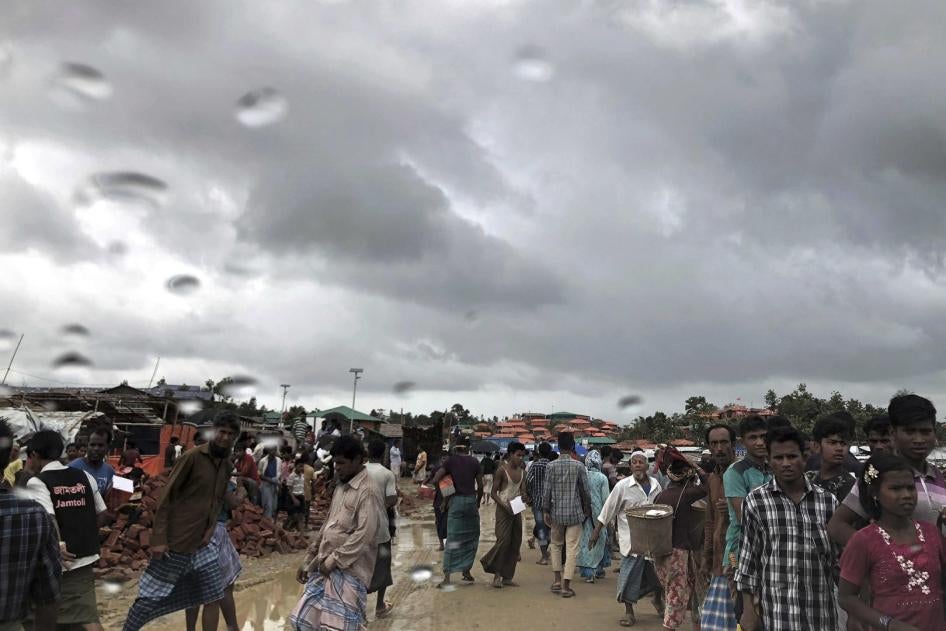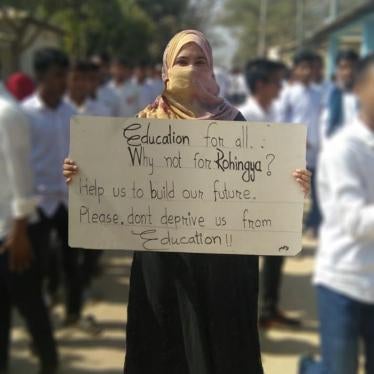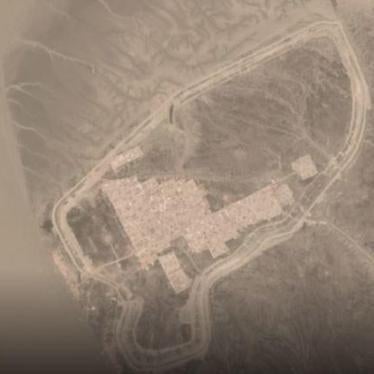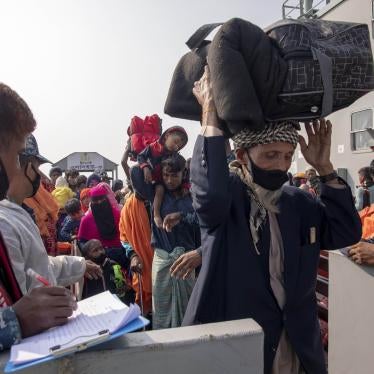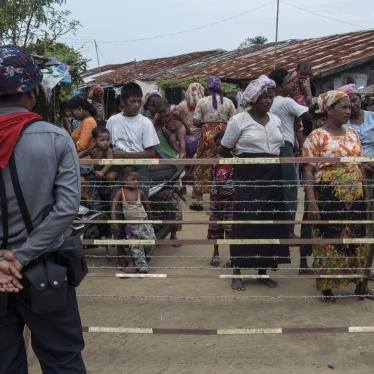(New York, July 12, 2019) – Rohingya refugees in crowded camps in Bangladesh are at serious risk of displacement and injury from monsoon flooding and landslides, Human Rights Watch said today. Since early July 2019, flooding and landslides have displaced nearly 6,000 refugees in the camps near Cox’s Bazar, damaged over 3,500 shelters, and killed two people, including a child.
The International Organization for Migration reported over 400 landslides, 60 windstorms, and at least 28 incidents of flooding in the first 10 days of July, affecting over 22,000 people. Bangladesh authorities should relocate Rohingya refugees to safer areas near the refugee camps and allow permanent structures inside the camps for protection during heavy monsoon seasons, Human Rights Watch said.
“Monsoons and landslides are making the Rohingya refugees’ difficult situation even more precarious,” said Bill Frelick, refugee rights director at Human Rights Watch. “Support to Bangladesh from donor governments is crucial for making sure there will be continuing assistance to the refugee population.”
Myanmar’s campaign of ethnic cleansing, beginning August 2017, forced over 740,000 Rohingya Muslims to flee to neighboring Bangladesh. The Myanmar government’s unwillingness to address the systemic persecution and other serious rights violations against the Rohingya leaves the refugees stranded in Bangladesh without prospects for a safe or dignified return in the foreseeable future.
Over the past two years, aid agencies have improved shelter conditions, built safer infrastructure, and developed monsoon preparedness in the camps. However, the humanitarian response remains critically underfunded. The 2019 Joint Response Plan for the Rohingya humanitarian crisis has received only a third, or US$301 million, of the $920 million needed to meet the needs of the Rohingya refugees and host communities in Bangladesh this year. The Joint Response Plan notes that, “The shelter materials and disaster risk reduction training provided to the refugees in 2018 are insufficient for protection against adverse weather conditions.”
Earlier in July, Human Rights Watch spoke to 10 Rohingya refugees across four settlements within the Kutupalong-Balukhali Expansion Camp. All expressed concerns about inadequate assistance. They described a shortage of drinking water and a looming health crisis due to flooded toilets, which foster disease outbreaks. Several learning centers have been inundated and children have stopped attending because of muddy conditions in their classrooms. UNICEF reported that the education of 60,000 children has been interrupted, with over 750 learning centers partially damaged and 5 heavily damaged.
One of the refugees interviewed said that when a group of refugees approached a Bangladeshi camp official after several homes were destroyed, he told them not to complain. “We have been taking shelter in nearby Bangladeshi schools or with relatives,” the man said.
Refugee shelters are particularly susceptible to damage or destruction because the Bangladeshi authorities will only allow constructing them with tarp, twine, bamboo, or other flimsy materials to maintain the “temporary” character of the camp. One refugee expressed concern that the structures were inadequate in monsoon season. “Rainwater leaks in because there are now holes in the tarpaulin roof, and the storm can easily damage the shelters within seconds,” he said. “It becomes impossible to stay inside the shelter with children.” The humanitarian Joint Response Plan noted that “much of the bamboo used is poor quality with limited durability” because of urgent shelter needs.
An additional 5,000 displaced Rohingya living in the “no man’s land" area at the Bangladesh-Myanmar border have been stranded during flooding. Fencing constructed by Myanmar authorities has prevented them from seeking safety in higher ground.
United Nations Secretary-General Antonio Guterres wrote on Twitter, “The horrific stories of suffering in Myanmar I heard from Rohingya refugees in Bangladesh last July remain vivid in my memory. A year later, their shelters are once again threatened by the monsoon season. We cannot allow the monsoons to wash away their hopes.”
“Myanmar is first and foremost responsible for the plight of the Rohingya, but until conditions allow for their safe return, stronger efforts are needed to protect the refugees and host communities in Bangladesh from humanitarian disaster,” Frelick said.
Bangladesh authorities have been promoting relocating refugees to Bhasan Char, a remote flood-prone silt island in the Bay of Bengal that is at risk of being completely submerged by a strong cyclone during high tide.
Concerned governments should press the Bangladesh government to halt plans to relocate refugees to Bhasan Char, and encourage the government to instead consider feasible relocation sites in Ukhiya subdistrict. Experts have identified this area as a possible relocation site that could accommodate more than 250,000 people, Human Rights Watch said.
“Helping and protecting these deeply traumatized people who were forced to flee Myanmar but are yet unable to safely return should be a priority not only for Bangladesh but for all concerned governments,” Frelick said. “Bangladesh faces numerous challenges in protecting its people during the monsoon season and so depends on assistance from international donors to cope with its large refugee population.”
